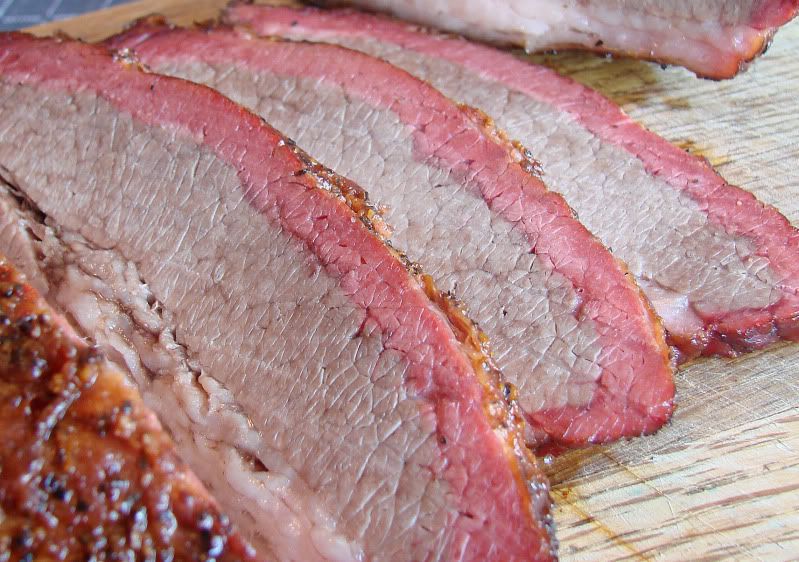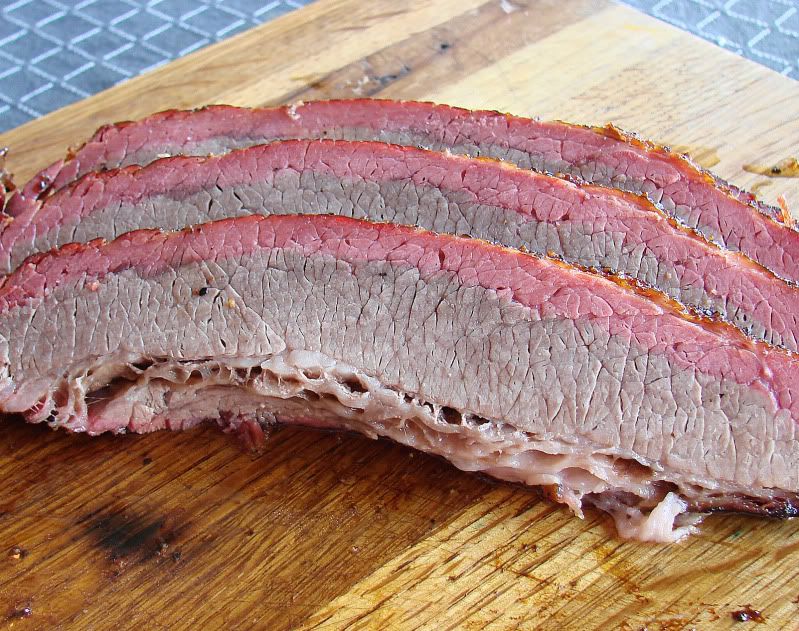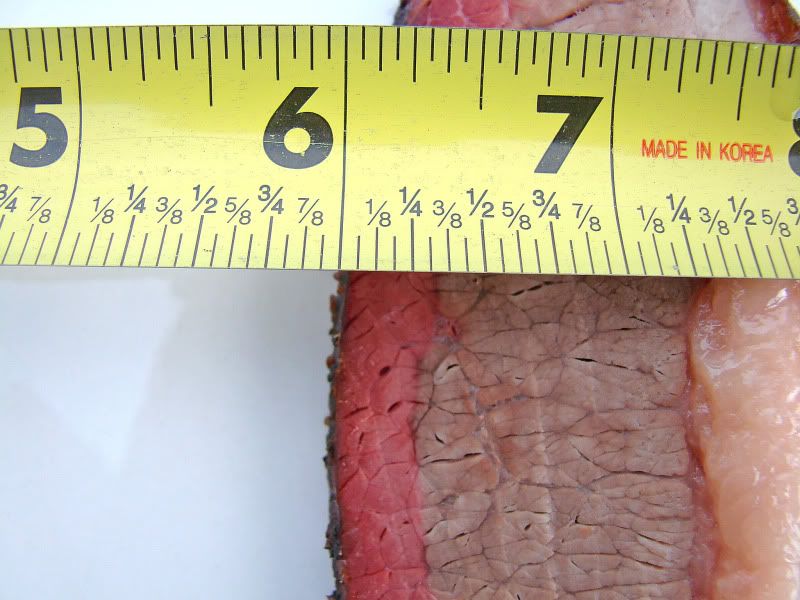- Joined
- Jan 14, 2006
- Messages
- 12,734
- Reaction score
- 15,623
- Points
- 113
- Location
- At home on the range in Wyoming

I think we all use smoke rings as sort of a way to measure our skill at the pit against the other guy. Although they contribute no flavor whatsoever, boy-oh-boy when I get a nice one it really makes me feel good. In the last couple of weeks, on two separate Q Forums, and in one particular watering hole, I’ve been in discussions about smoke rings, specifically the ones I shoot for on brisket.
Everyone mentioned their little tricks and mine included using cold meat, using a very low pit temp for a couple of hours, using good hardwood splits in the “wagon wheel” arrangement I favor, and adding 2 or 3 briquettes in with the lump. Then I mentioned that Tenderquick (because it contains both nitrates and nitrites) will guarantee a smoke ring….. even going so far as to make the claim that I could get one in the oven with a doctored brisket.
For this show and tell, I eliminated a couple of the things that I know contribute to ring formation such as the briquettes and using cold meat. I still used flavor wood splits (I wanted the flavor they provide) and I still used a low pit temp for 90 minutes…..but then I ramped up the cooker to 300° and went into the hot-n-fast mode. This shortened the time the meat was less than 140°, which is when the ring forms. Here is the timeline for a 6 pound flat.
0:00 - Remove brisket from the fridge and add Tenderquick to the inside face, making a paste. Leave at room temperature.
1:00 – Rinse off the Tenderquick and keep the brisket at room temperature for another hour. I did notice that the color of the meat was a deeper red following the rinse.

2:00 – Season the brisket with salt, pepper & cayenne. Put into a 180° smoker with an established fire and pecan splits.

4:00 – Ramp the pit temp up to 300°
5:30 – Internal temperature was 150°. According to most sources, the ring should stop forming at 135° to 140°.
8:30 – Brisket was 194° and passed the tenderness test. Wrapped in foil and rested for 1 hour.

9:30 – Sliced and served. Tenderness was above average, moisture was average, and there was no off-taste, hammy texture or excessive saltiness. (Tenderquick is basically a salt carrier for the small percentage of nitrates and nitrites that it contains). I do favor injecting flats to insure a good moist product, but I passed on that for this experiment.

Summary - Starting weight 6 pound brisket flat, thirdeye trim. Total pit time was 6 hours, 30 minutes. Total time in the smoke ring temperature zone was less than 3 hours 30 minutes. Total time including prep and rest was 9 hours, 30 minutes. Smoke ring thickness was over 1/4” with a few areas pushing 3/8”.

Is it cheating to use Tenderquick on brisket? Well if it is, then I guess I cheat on several of my sausages, my Buckboard Bacon, my corned beef & pastrami, my smoked pork chops and almost all of my brines, because I use it to enhance the particular characteristic(s) that I am after. One can also assume that there are enough competition cooks that use it, that smoke rings are not a factor when judging. Will I doctor the two 15 pound packers I’m smoking for a friend tomorrow? Nah, I think my regular ‘ol tricks will be good enough. I’ll just keep this in my bag of tricks. Hmmmm. A second bar bet? A smoke ring contest with some of the locals that are always blowin’ smoke? Maybe. :twisted:
Last edited:




